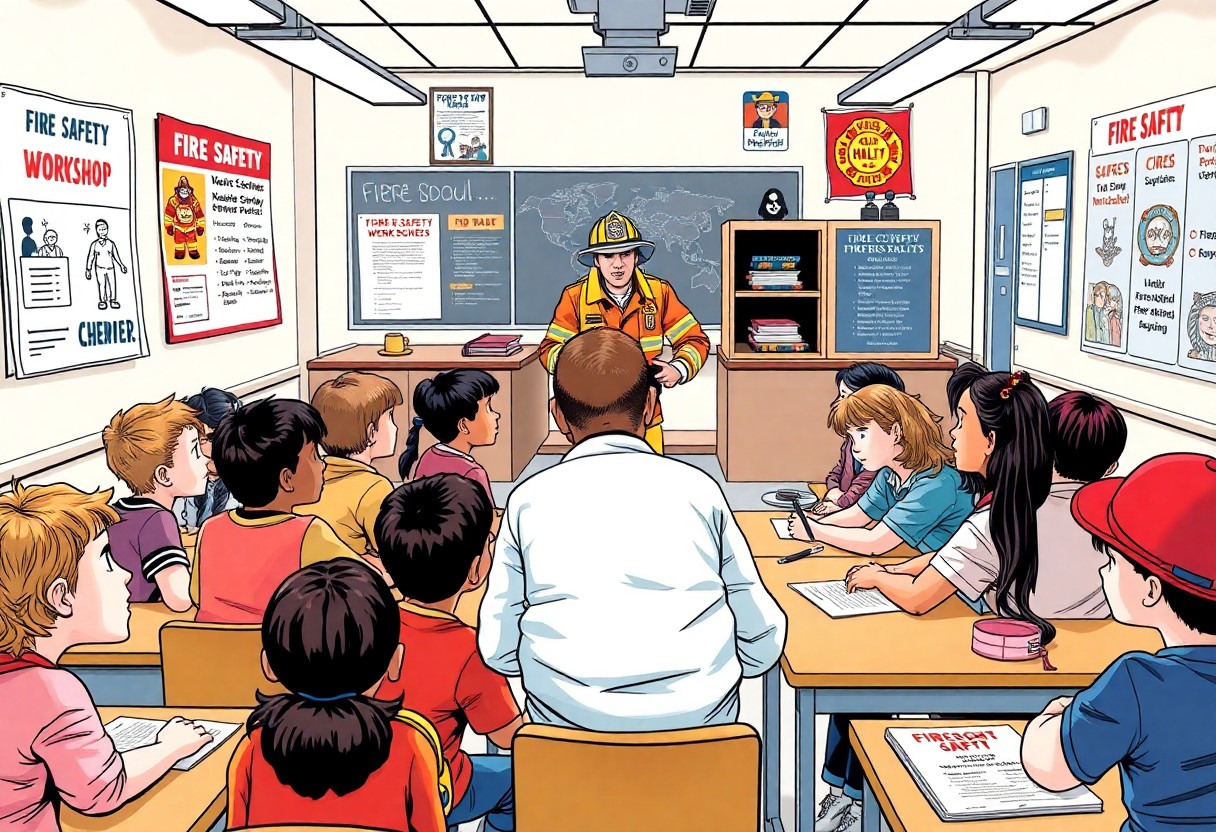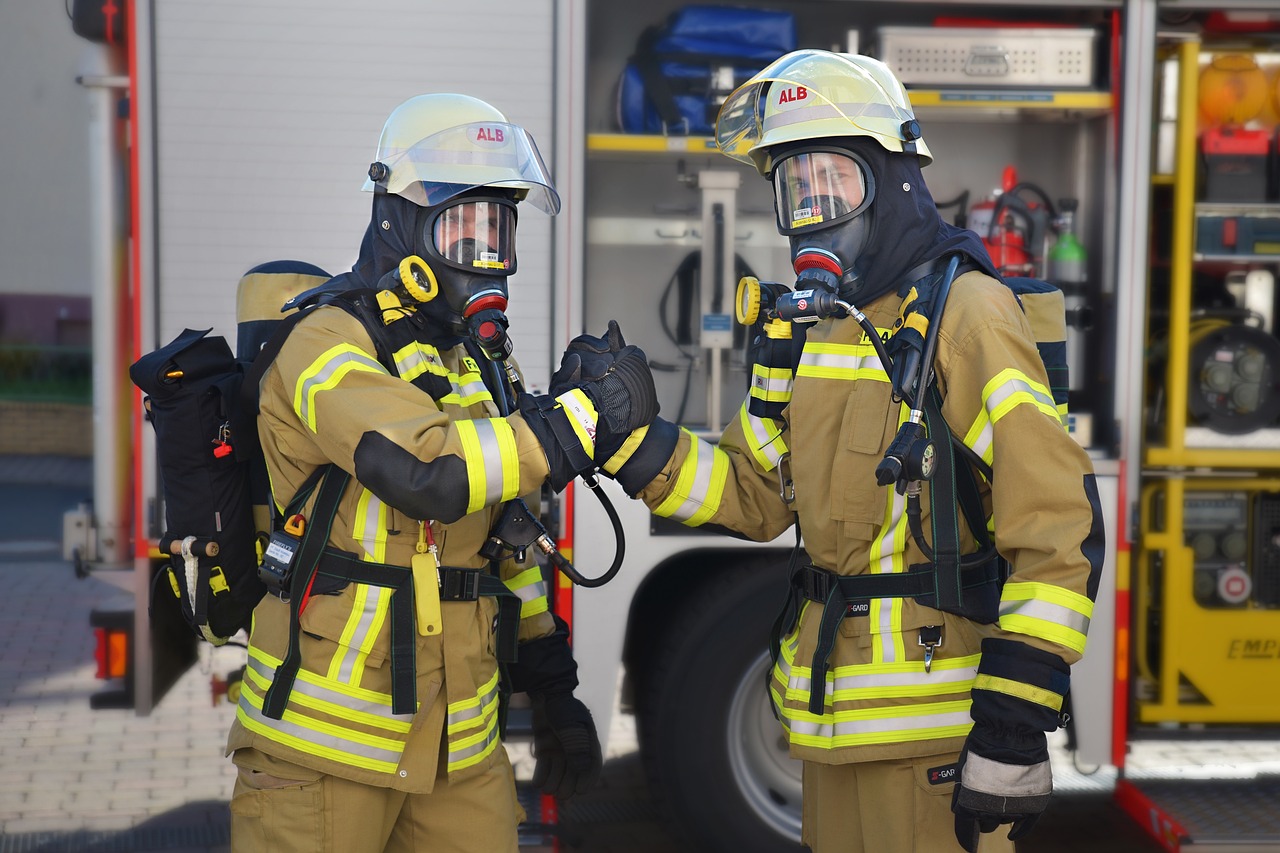Over the years, partnering with schools has proven to be an effective strategy for enhancing fire safety education and recruitment efforts. By establishing strong connections with educational institutions, you can create impactful programs that not only inform students about fire safety but also inspire future career pathways in the fire service. This guide will walk you through the imperative steps to form these partnerships, engage students meaningfully, and ultimately boost both public awareness and interest in joining your team.
Key Takeaways:
- Build Relationships: Establish strong partnerships with local schools by engaging in regular communication and demonstrating commitment to fire safety education.
- Interactive Learning: Create hands-on and engaging programs that involve students, making learning about fire safety memorable and impactful.
- Recruitment Opportunities: Utilize fire safety programs as a platform for recruitment, showcasing career options in fire and emergency services to inspire students.
Understanding the Importance of Fire Safety Education
For every community, fire safety education is important in fostering awareness and preparedness. By providing students with the knowledge of fire risks and emergency responses, you equip them with skills that can save lives and property. This education empowers youth to take action in emergencies, reinforces community resilience, and cultivates a culture of safety that extends beyond the classroom.
How-To: Identify Key Fire Safety Topics
Assuming you want to create an effective fire safety education program, it’s important to identify the key topics relevant to your audience. Start by assessing the unique fire risks within your community and aligning these issues with age-appropriate materials. Topics like smoke alarm usage, evacuation plans, and the importance of fire drills can serve as foundational elements of your curriculum.
Tips for Engaging Students Effectively
With your curriculum established, engaging students becomes a priority. Incorporating interactive activities, such as simulations or group discussions, helps in capturing their attention. Additionally, providing opportunities for hands-on experiences can reinforce the principles of fire safety. Consider the following strategies to enhance student engagement:
- Utilize visual aids and interactive demonstrations.
- Organize role-playing scenarios that mimic real-life situations.
- Encourage questions and open discussions to foster curiosity.
After utilizing these methods, you can create a more dynamic learning environment that keeps students interested.
Identify further strategies to optimize your engagement by incorporating feedback from students about their learning preferences. Additionally, connecting with local fire professionals for guest lectures can inspire and inform your audience. It can be beneficial to structure your lessons around real-world experiences to enhance relatability and retention. Consider these engagement methods:
- Offer incentives for participation, like certificates or small prizes.
- Use storytelling to relay important fire safety messages.
- Incorporate multimedia resources to make lessons visually appealing.
After implementing these techniques, you’ll likely see increased enthusiasm and understanding of fire safety among students.
Collaborating with Schools: Steps to Success
Assuming you want to create effective fire safety education programs, building a strong partnership with local schools is necessary. This collaboration not only enhances the educational experience for students but also serves as a meaningful way to promote your organization. By approaching schools thoughtfully, you can help create a safe environment while boosting your recruitment efforts.
How-To: Build Relationships with School Administrators
To successfully collaborate with schools, start by establishing rapport with school administrators. Schedule meetings to discuss your goals for fire safety education and express your commitment to enhancing student safety. Providing valuable resources or training can further solidify this relationship.
Tips for Conducting Joint Fire Safety Events
Collaborating on fire safety events can significantly increase community awareness and interest. Consider planning joint activities such as fire drills, educational workshops, and engaging presentations. Here are some tips for successful events:
- Align your goals with the school’s mission.
- Involve students actively in your activities.
- Promote your joint efforts in local media.
Knowing the importance of engaging the community effectively enhances both fire safety awareness and your recruitment opportunities.
Administrators and teachers greatly appreciate partnerships that offer educational value. As you plan these joint events, focus on creating an interactive experience for students. Providing hands-on learning opportunities can enhance the impact of your fire safety education:
- Include demonstrations or simulations of fire emergencies.
- Make use of educational materials tailored for various age groups.
- Gather feedback to improve future collaborations.
Knowing that a well-executed event can foster ongoing relationships and ensure the continued promotion of fire safety education is key to your success.
Factors to Consider for Effective Programs
Your fire safety education program will be most effective when you thoughtfully consider various factors that impact engagement and learning. Key elements include:
- Understanding the school’s curriculum and values
- Identifying age-appropriate materials
- Incorporating interactive activities
- Ensuring instructor qualifications align with safety standards
Recognizing these factors can help you create more impactful programs that foster collaboration and learning.
How-To: Assess Community Needs
If you want your fire safety education program to resonate with students and staff, assessing the community’s specific needs is imperative. Conduct surveys, gather feedback, and engage with educators to identify areas where your organization can provide valuable support. This approach not only tailors your program but also builds strong relationships within the community.
Tips for Customizing Programs for Diverse School Environments
Clearly, customizing your fire safety programs for diverse school environments is vital to ensure relevance and effectiveness. Consider the following tips:
- Adapt your materials for various age groups
- Involve community stakeholders for localized impact
- Utilize bilingual resources for multicultural settings
Assume that each school has unique characteristics, and your program must reflect those differences for successful engagement.
For instance, you might encounter schools with diverse populations that require varying educational approaches. Tailoring your programs can enhance understanding and retention among students from different backgrounds. Consider the following elements:
- Incorporating examples relevant to students’ everyday lives
- Adjusting your teaching methods to suit different learning styles
- Providing resources in multiple languages to ensure inclusivity
Assume that diversity in a school can greatly influence how information is received and understood, making customization imperative for effective fire safety education.
Boosting Recruitment Through Fire Safety Programs
Despite the challenges of attracting new recruits, collaborating with schools for fire safety education programs can significantly enhance your recruitment efforts. By actively engaging with students and instilling fire safety awareness, you create a favorable impression of the fire service career, encouraging students to consider this meaningful profession.
How-To: Create Incentives for Participation
Clearly outlining the benefits of participation is key to attracting interest. Implement incentives such as scholarships, free training sessions, or community service hours that students can fulfill through their involvement in your fire safety programs.
Tips for Marketing Your Program to Schools
Assuming you have a well-structured fire safety program, effective marketing is paramount. To appeal to schools, use a strategic approach that resonates with both students and educators. Consider the following:
- Develop compelling promotional materials that highlight the program’s benefits.
- Network with teachers and school administrators to build strong relationships.
- Host interactive demonstrations to engage students directly.
Knowing how to connect your program with educational goals will enhance your outreach efforts.
Your approach should showcase not only the educational value of your program but also how it aligns with school missions. This can significantly increase interest and investment from schools. Consider these strategies:
- Create a website or social media presence dedicated to the program.
- Utilize testimonials from past participants to build credibility.
- Offer flexible scheduling to accommodate school calendars.
Knowing that targeted outreach will maximize your chances of collaboration and success is necessary.
Evaluating Program Effectiveness
Keep your program’s goals in focus by regularly assessing its effectiveness. Evaluating the impact of your fire safety education initiatives not only provides insights into what works but also helps identify areas for improvement. By measuring participant engagement, knowledge retention, and behavior change, you can tailor your programs to better meet the needs of the schools and their communities.
How-To: Collect and Analyze Feedback
Some effective ways to gather feedback include surveys, interviews, and focus groups with students, teachers, and parents. Analyzing this information will help you understand participants’ perceptions of the program and gauge its effectiveness. Utilize both quantitative data, such as test scores, and qualitative data, such as open-ended responses, to paint a complete picture.
Tips for Continuous Improvement
Improvement is a continuous journey, and actively seeking ways to enhance your fire safety education programs will yield better outcomes. Consider implementing the following strategies:
- Review feedback regularly and identify trends.
- Update your materials and methods based on current fire safety standards.
- Incorporate innovative teaching techniques, such as interactive demonstrations.
This will ensure your programs remain relevant and effective over time.
Effectiveness lies in your commitment to adapting your programs based on the feedback collected. By maintaining a growth mindset, you can foster an environment of learning and responsiveness. Consider these additional strategies:
- Engage with local fire departments to stay informed on best practices.
- Establish a feedback loop with participating schools for ongoing dialogue.
- Recognize and celebrate successes to motivate your team and stakeholders.
This will enhance the overall quality and impact of your educational initiatives.
Summing up
With this in mind, collaborating with schools for effective fire safety education programs not only enhances student awareness but also creates recruitment opportunities for your fire department. By engaging with educators and tailoring programs to meet their needs, you can foster a culture of safety while showcasing the rewarding careers within fire services. Establishing relationships through workshops and interactive sessions allows you to highlight the importance of fire safety while inspiring the next generation of firefighters who may join your department in the future.



